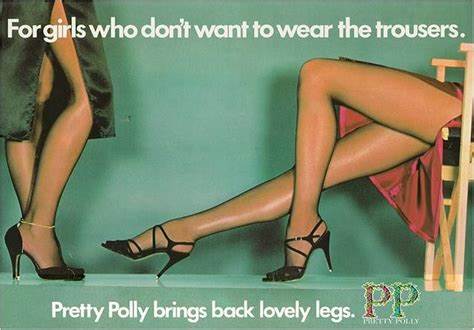It’s that time again: the time when commentators of all kinds look back at the last 12 months, and pick out what they see as the most significant trends or the most memorable moments of the year. This blog’s annual round-ups have tended to be variations on a few well-worn themes; the details are different every year, but the overall trends are much the same. In that respect, as what follows will make clear, 2023 was fairly typical; but one thing several of the issues I’ve picked out have in common (something the title of this post alludes to) is an oddly “retro” vibe: they’re cases where an old form of sexism has been reinvented or repackaged for new times.
- Tech troubles
This year’s lists of WOTYs (words of the year) were dominated by a single theme: most major English dictionaries agreed that 2023 was the year of artificial intelligence. Though Oxford (which put its shortlist to a public vote) ended up crowning rizz, a slang term derived from charisma, Collins went with AI and Cambridge chose hallucinate (in the AI-related sense of “make stuff up”). Merriam-Webster’s choice, authentic, reflected concerns about AI’s capacity to deceive by mimicking or producing believable simulacra of real people: deepfake was also on its shortlist.
Feminists have their own concerns about recent developments in AI, ranging from the way large language models amplify sexist biases in the massive datasets used to train them to the implications of AI “companions”, whose increasing popularity I wrote about in May. But this year’s events reminded us that some of women’s most pressing technology-related problems are not new—and are still not getting the kind of serious attention, either from the tech companies or from policymakers, which we’ve seen being given to AI.
In January, when the New Zealand prime minister Jacinda Ardern unexpectedly resigned, there was speculation that the misogynist abuse and threats she’d been subjected to had played a significant part in her decision. Another female leader who resigned in 2023, the Scottish First Minister Nicola Sturgeon (though she clearly had other reasons for stepping down) spoke publicly both about her personal experiences of online abuse and her fear that it was driving women out of politics, or deterring them from entering in the first place.
We’ve known about this problem for some time. In 2016 a cross-party campaign (fronted by Yvette Cooper MP) was launched under the slogan “Reclaim the Internet”: it aimed, among other things, to pressure the tech companies to do more. But this initiative evidently did not achieve much. In 2017 a survey of women MPs found that one in three had seriously considered quitting because of the volume of abuse they received, and in 2019 a significant number chose not to seek re-election, citing abuse as a reason for their decision to stand down. Like tech’s other big misogyny problems–one being the ease with which violent and/or supposedly illegal pornography can be accessed online, by children as well as adults, and another being the proliferation of extreme misogynist content which is then promoted to young men on mainstream platforms like YouTube and TikTok—this one seems to be getting worse.
2. Women beware women: the political rise of the female anti-feminist
But there’s one type of female politician who had a good year in 2023: the right-wing woman whose rhetoric is even more extreme, reactionary and authoritarian than that of the men around her. Though in most cases her main selling point is nationalism/racism, she will often position herself explicitly as a female anti-feminist, extolling women’s traditional domestic roles while making her own status as an exception, a woman in a position of public leadership, more acceptable by adopting one or more of the archetypal personae through which female power has historically been understood (mother, iron lady/warrior queen, seductress or “pet”). As a type she is far from new, but she has managed to reinvent herself: her politics may be backward-looking, but she presents herself as a thoroughly modern woman.
Giorgia Meloni, the leader of the “post-fascist” Brothers [sic] of Italy who is now the Italian prime minister, is a notable case in point. She has described herself as first and foremost a mother, and has emphasized her Christian beliefs, but she has also exploited her relative youth and sexual attractiveness in a way that sometimes makes you wonder if she’s trying to establish the bimbo as a new political archetype. She once posed for the media while holding a pair of melons to her chest (a reference both to her last name and to the slang meaning of “melons”, which is the same in Italian as in English), and at a NATO summit in 2023 she cut short a press conference on the grounds that her high heeled shoes were killing her. Like Marine Le Pen (who improved her performance in the last French presidential election by adopting a softer, more maternal image), Meloni seems to know what she’s doing: polls suggest that her brand of femininity is seen by many women as “relatable”.
The antifeminist female politician has also become a significant figure in the British Tory party, whose internal wars were, regrettably, a major driver of our national politics in 2023. She isn’t a completely new phenomenon (the obvious precedent is Margaret Thatcher), but I can’t remember a time when so many women were talked of on the Tory right as potential leaders. In some cases antifeminism is incidental to their political brand (Suella Braverman and Priti Patel, for instance, are more notable for being the rabidly anti-immigrant children of immigrants), but one of this year’s rising stars, the 41-year-old backbench MP Miriam Cates, brought it squarely into the foreground, underlining her status as a woman to watch with a speech at the NatCon conference which identified falling birthrates (she didn’t say “among white people” but that’s generally assumed to have been her meaning) as an “existential crisis”. Too many young people, she said (this obviously meant “young women”) were going to university and having careers instead of babies. (Footnote: Miriam Cates has a degree from Cambridge University and a career as a politician; she does also have three children, but given the demands of her job as an MP we can assume she delegates most childcare to someone else.)
But as troubling as it is to hear this kind of rhetoric from an elected British politician, we Brits don’t seem to be in much immediate danger of being led by fanatically right-wing women. Their most senior representative in government, Suella Braverman, got the sack in November (prompting a reshuffle that brought a more traditional figure, “Daddy” David Cameron, back into the Cabinet). Meanwhile, the official inquiry into the handling of the Covid pandemic underlined the point that real power still belongs largely to the same privileged male public-school-and-Oxbridge types who have ruled us since time immemorial. The language these men used during the crisis (as revealed by the WhatsApp messages they exchanged) gave a good indication of their arrogance, laziness and hostility to any woman who raised concerns. The testimony of Helen MacNamara, the most senior female civil servant in the Cabinet Office at the time, was an incisive, albeit belated, contribution to feminist criticism of Boris Johnson’s monumentally incompetent and self-serving administration.
3. Misrepresenting male violence
Another subject which continued to make national headlines in 2023 was the high prevalence of violence against women, and the extent to which the justice system is failing women who suffer it. Since Sarah Everard’s abduction and murder by serving police officer Wayne Couzens in 2021 there has been a steady flow of new revelations about police officers either perpetrating crimes against women or covering up for colleagues who had done so. But while the media have been instrumental in bringing these cases to public attention, an academic book published in April, Alessia Tranchese’s From Fritzl to #MeToo, showed that their reporting of sexual violence is itself part of the problem, contributing significantly to the climate of disbelief, victim-blaming and “himpathy” (making excuses for male perpetrators) which enables so many violent men to evade justice.
Tranchese’s analysis of the language of rape reporting in UK newspapers provides clear evidence that language which implies that women who report rape are lying is not only still the norm, it has actually become even more entrenched in recent years. One of the developments that has helped to entrench it is the “celebrification” of news coverage since the 2010s: stories about male celebrities accused of rape or sexual assault are getting more space in newspapers, and these men are particularly likely to be given the “himpathetic” treatment. While it’s often assumed that #MeToo put a stop to this, Tranchese’s data suggest that its effect was in fact quite limited, and that the backlash that followed (which she documents in detail) may have entrenched the problem further.
Her point was demonstrated in September of this year, when a documentary that aired allegations about Russell Brand prompted a flurry of complaints that Brand was being unfairly subjected to “trial by media”. This view was expressed by commentators across the political spectrum, and none appeared to have noticed what Tranchese had pointed out: that women who report being raped or sexually harassed by a popular celebrity like Brand (or even one as lacking in “rizz” as Prince Andrew) are routinely put on trial by the media, in reports which implicitly—and sometimes explicitly—represent them as sluts, gold-diggers, vengeful obsessives and liars. Yet this form of “trial by media” does not raise the same concern that it might interfere with the pursuit of justice through the proper channels: it’s familiar, unremarkable and taken for granted. From Fritzl to #MeToo was not the most enjoyable feminist book about language I read this year (that accolade goes to Jenni Nuttall’s Mother Tongue), but in political terms it was probably the most important.
4. Back to bullshit
One issue this blog has returned to regularly since 2015 is the never-ending flow of bullshit about women’s language masquerading as wisdom or science. There was something of a slowdown during the pandemic, but by the beginning of this year normal service had been resumed.
In January I spotted what looked like a new riff on the familiar theme of How Women’s Language Holds Them Back, in a Harvard Business Review article headed “Research: men speak more abstractly than women”. Which is a problem, apparently, because “our studies have shown that people tend to associate abstract language with power and leadership”. So, if you want to be seen as a leader, try waffling vaguely about “intangible concepts”. And if you’re wondering how that fits with another common piece of advice for women—namely, “cut out the fluff and be direct”—let me remind you that this kind of logical thinking will get you nowhere. On Planet Bullshit the only rule which applies consistently is that anything women do–or are said to do–with language can and will be used against them.
Later in the year I revisited the more familiar bullshit claim that women are incapable of forming a sentence without using the word “sorry” after stumbling across some training materials which set out to cure trainees of their addiction to the S-word by confronting them with the shocking fact that in the course of her life the average woman will apologize no fewer than 295,650 times. And where did this statistic come from? Why, from a survey conducted by an online florist! Whose purpose, needless to say, was not scientific but commercial: it was designed to persuade us that, since verbal apologies have been rendered meaningless by overuse, we should consider buying “apology flowers” instead.
In July one of the world’s leading newspapers, the New York Times, took the unusual step of publishing an op-ed in which the writer Adam Grant (a professor of organizational psychology at the Wharton Business School) defended women’s use of so-called “weak language” as a rational choice, given the evidence that women who follow advice to speak directly and assertively are liable to be judged “abrasive”, “strident” and unlikable. It’s an argument that feminist linguists have been making for decades; but perhaps now that a man has made it, people might actually start taking it seriously.
5. (M)adwomen: reinventing sexism in advertising
As annoyed as I get about bullshit advice (especially when it makes use of garbage “research” like the online florist’s survey while resolutely ignoring the existence of actual research on language and gender), my most rage-fuelled post of 2023 (and also the one that got most page-views) was about another old chestnut, sexism in advertising: more specifically, the way the use of verbal innuendo and sexualized visual imagery has spread from its original home in ads for products like women’s underwear to charity-led campaigns about women’s health.
Once again, this was not the first time I’d broached the subject. In 2021 I criticized a campaign which claimed to be raising awareness about cervical cancer screening by urging women to post a cat picture online, choosing a longhaired, shorthaired or hairless cat to show whether their pubic hair was “bushy, bare or halfway there” (cat = pussy, geddit?). Could efforts to encourage women to have smear tests get any more tasteless? The answer, it turns out, is yes: in Manchester in November, North West Cancer Research unveiled its latest campaign, featuring 3D images of disembodied female legs alongside a slogan its creators described as “playful and a bit cheeky” (though I’d call it “demeaning and a bit rapey”): “don’t keep ‘em crossed, get screened instead”.
A lot of people who objected to this campaign assumed it must have been designed by men, but in fact it was produced by a female-led creative team at an agency whose website stresses its feminist credentials. Unfortunately it is part of an industry whose feminism leans heavily on half-baked ideas about “empowerment” and sexual “agency”: hence the assumption that using sexualized words and images in the context of cancer prevention is witty and “edgy” rather than offensive (except of course to dried-up old prudes who haven’t caught up with the latest thinking). For this agency’s next awayday I’d recommend a daytrip to Tate Britain, whose current exhibition of late 20th century British feminist art, Women in Revolt! might help them understand why those of us who remember the 1970s (that golden age of sexist advertising) aren’t impressed. The issue isn’t that we’re old: we’re just puzzled and disappointed to see younger women reinventing a wheel we spent our own youth trying to put a spoke in–partly [irony klaxon] so that future generations would be spared the relentless sexism we grew up with.
6. Books, old and new
Speaking of late 20th century feminism, November brought the sad news that Dale Spender had died. Though her contributions to the women’s movement were many and varied, particularly in her native Australia, in Britain she was probably best known as the author of the 1980 feminist classic Man Made Language, in which she argued that using a language made by men forces women to internalize and reproduce a male-centred view of the world. My post about Spender explained why I didn’t (and still don’t) agree; but it also explored the reasons why her book spoke so powerfully to many feminists, and reflected on the way it challenged me to formulate my own ideas coherently (a process whose end result was my own first book). It isn’t always the writers you agree with who inspire you, and you don’t have to agree with other feminists about everything to admire and respect their contributions.
Though I can’t compete with Spender’s lifetime output of over 30 books, I’ve written a few more since the 1980s, and the most recent of them, Language, Sexism and Misogyny, was published just before Christmas. It’s my attempt to assess what’s changed—and what hasn’t—in the 50 years since language became a serious subject of feminist study; it covers many of the subjects I’ve written about on this blog, and it’s aimed at a similar kind of audience (i.e., it’s not just for specialists in linguistics). If anyone who’s reading this post would also like to read the book, you can find the details here.
As ever, I’ll end by thanking everyone who’s visited Language: a feminist guide in 2023, and all the other feminist researchers and writers who’ve contributed to this year’s posts through their published work or their suggestions and recommendations. And whatever may happen in 2024, I hope it will bring you at least some of what you wish for.







